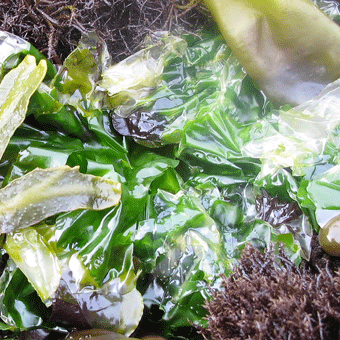Sea Lettuce

Nearly see-through, sea lettuce can seem to be extremely delicate.
Sea lettuce thrives on the upper beach, an area frequently exposed to air and hot sun. Their thin blades can get quite warm and a bit dry and stiff at low tide, especially in the summer. But sea lettuces are amazingly resilient: they’ll usually rehydrate and recover when the tide returns.
And what if it rains at low tide? Or if it freezes? Sea lettuce is also remarkably tolerant of exposure to fresh water and to cold.
Keep an eye out!
Good thing sea lettuce is fast growing: many animals eat it. Look for tiny black periwinkles grazing the surface of the delicate blades.
